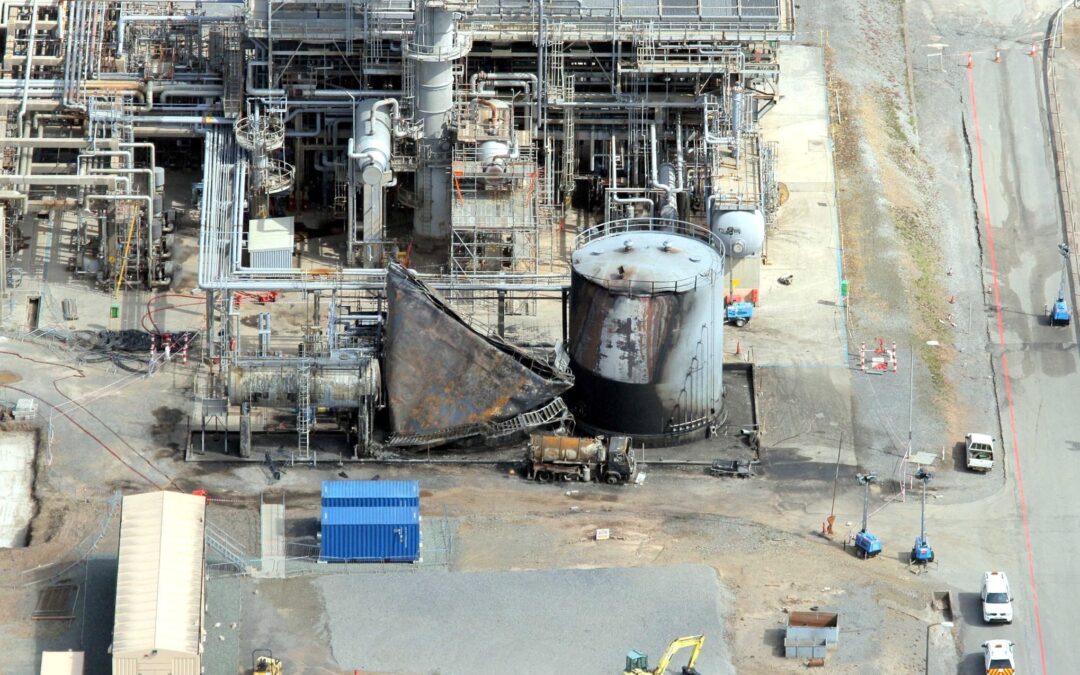It is evident that the safety culture in the refinery was inadequate at the time of the explosion, with a significant amount of staff lacking appropriate training and experience.
Days before the explosion, gas test and manual dip tests were carried out by the operators. A liquid depth of 360mm was measured in the 17T302 tank between the top of the liquid and the dip plate inside the tank, however, the liquid height between the dip plate and the base of the tank, below the plate was not accounted for giving a false reading. It was found that the operator was not aware of the presence of the plate.
The operator also carried out a gas test in the internal atmosphere of the tank. The measurement taken at 1–1.5m showed a hydrocarbon reading of 67% LEL. The results weren’t officially documented, and their significance downplayed. The legal limit of dangerous substances is below 10% of the LEL, with an increase up to 25% LEL as an temporary increase.
Giving an impression the operators did not receive appropriate training in relation to working in explosive environments and were unaware of the dangers associated with them.
The permit to work for cleaning of the tank was rushed and not properly reviewed by Chevron staff. Many relevant elements were not considered, including the contents of the tank being hazardous, toxic and flammable. Resulting in no control measures, including a gas test being taken.
B&A Contractors had a four-year contract with the refinery, who considered the company as a good and safe contractor. According to their contract, B&A was responsible for not grounding the hose appropriately and Chevron was responsible for checking those safety measures, which they did not do. The refinery assumed the competence of their contractors but did not verify said competence.
A risk assessment was done in 2008 for the ARU, however the hydrocarbon contamination was not considered as a potential risk and the team responsible for the assessment did not have proper knowledge of the process.
The risk assessment done before commencing the work was only done as a legal requirement with little additional thought into the risks involved. The cleaning equipment was already set up before starting the risk assessment, with a presumption that no extra control measures will be implemented.
Those singled out events shed light on the gaps in knowledge of the operators. The HSE investigators found that many of the tasks which should have been done by senior and more experienced personnel were done by trainees and less experienced operators without adequate knowledge of the tasks. The lack of proper communication and training was the effect of poor management practices on the site and a major contributor to the tragedy the happened on June 2nd, 2011.
Occupli Consultancy specialists provide practical solutions and advice to all our clients in all areas of ATEX and process related safety concerns. Our team work to legislative requirements and benchmark against industry best practice to produces assessments for our clients. Occupli Consultants have carried out ammonia risk assessments in a range of different industries including medical devices, pharmaceutical and food industries.
If you require consultation on a process or ATEX safety issue, reach out to our team of consultants here

